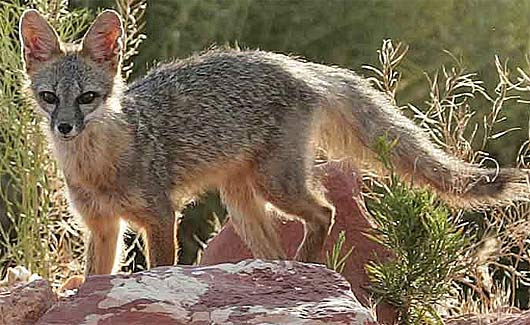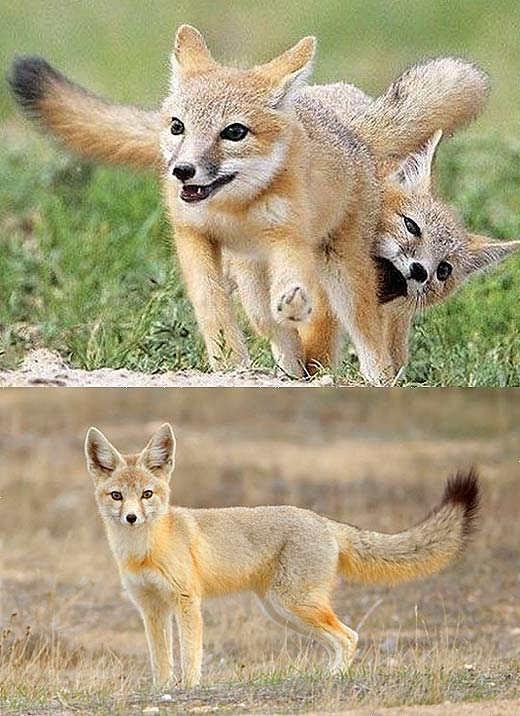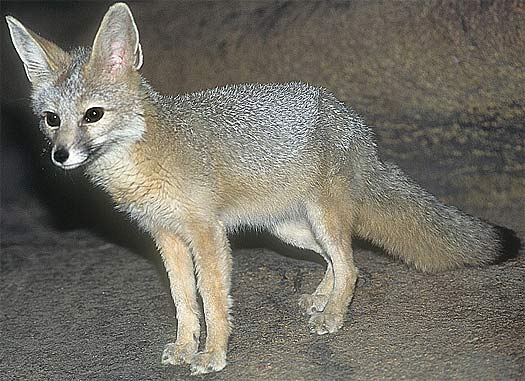Kit Fox – Big Ears in the Desert

This perky little fox definitely deserves its scientific name “macrotis” (Vulpes macrotis) meaning “big ears”. The ears and bushy tail are the first thing you will notice about this canid. Another one of the animal’s popular names, desert fox, describes its habitat in North America (US and Mexico). With its sandy-colored coat and black-tipped tail it is designed to blend in to the desert landscape. It makes its den in the loose desert soil. It may either dig its own burrow or borrow one vacated by another animal such as a badger or prairie dog. For easy access, the den may have as many as seven entry and exit holes. The kit fox is a small, slender animal. It usually weighs less than 7 pounds (3.2 kg) and usually doesn’t measure more than 32 inches (81 cm) long (including the tail). This makes it the smallest animal of the canid family members from North America. The disproportionately large ears are acute sensors of danger in the open desert country. Alerted by any kind of threat, the kit fox readily responds by setting off at a brisk pace. Over short distances it can usually outpace a predator, reaching speeds up to 25 miles (40 km) an hour.

The kit fox hunts by night using a stalking and pouncing strategy. It feeds on mice, rats, ground squirrels, birds, lizards, snakes, and insects. In turn, the fox itself must be on the look out for eagles and coyotes that prey on it. Ranchers pose another inadvertent threat. Poisoned baits laid out for coyotes are often eaten by this canid. At one time the kit fox population was seriously threatened, but tighter controls on the use of poisons have helped bring back the population count to a more sustainable level. Some subspecies however, are still listed as endangered (San Joaquin subspecies) or already extinct (Southern California subspecies).

The fox pairs mate in early winter and produce a litter of four to seven in early spring. While the female nurses the young, the male provides for her. In two or three months, both parents take the young out to explore and hunt, and the family separates in autumn.

